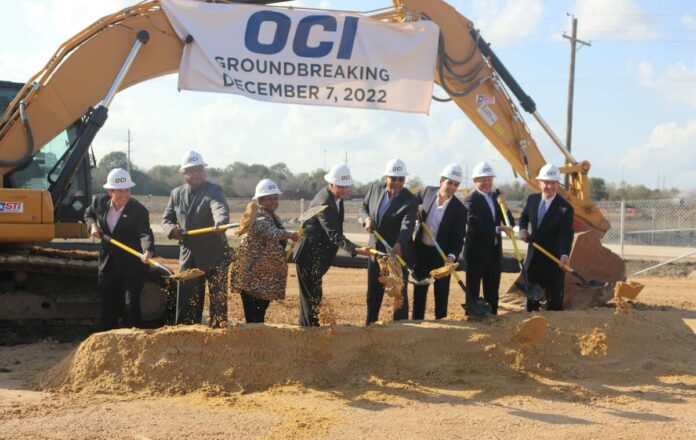Dutch fertilizer company OCI is embarking on a significant venture, investing in the construction of a $1 billion plant in Texas to produce ammonia with reduced greenhouse gas emissions. Despite lacking sales contracts, OCI aims to capture and sequester 95% of the emissions generated during ammonia production, marking a pioneering move within the industry.
Unlocking New Business Potential
OCI’s ambitious drive to produce ammonia with a smaller carbon footprint extends beyond the traditional agricultural sector. By targeting the production of fuel for coal-burning Asian utilities and ships, OCI is tapping into potentially lucrative commercial opportunities that carry a degree of uncertainty but also hold promise for the future.
Economic Considerations and Government Support
The production of “blue ammonia” comes with additional costs of up to $119 per metric ton compared to conventional methods. However, subsidies under the U.S. Inflation Reduction Act (IRA), valued at approximately $145 per ton, bridge this economic gap. To ensure the project’s financial viability, OCI is reliant on Asian utilities willing to pay premium prices, justifying the capital costs associated with the venture.
Government Incentives and Market Viability
The success of blue ammonia economics depends on further incentives from Japan and South Korea, encouraging utilities to generate electricity with reduced emissions using coal blended with 20% ammonia. This ratio is considered technologically feasible without increasing emissions of nitrous oxide, a significant pollutant. If utility premiums fail to materialize, OCI has contingency plans to utilize the blue ammonia for fertilizer production in the Netherlands, cater to industrial buyers interested in decarbonization, or sell within the United States.
Projected Demand and Industry Outlook
OCI’s Texas plant, scheduled to commence production in 2025, aims to produce 1.1 million metric tons of ammonia annually. Global ammonia demand is expected to rise by 10% from 2021 to 2030, reaching 203 million tons annually, according to data from TD Cowen and Yara. The upward trajectory continues, with projected demand reaching 294 million tons by 2040 and 470 million tons by 2050.
Competition and Future Prospects
While OCI takes the lead in low-emission ammonia production, other major players in the fertilizer industry, such as CF Industries, Yara, and Nutrien, are also considering establishing their own plants along the U.S. Gulf Coast. Collaborations have already been formed between Japanese utilities, including JERA, and fertilizer companies such as CF and Yara. However, the market’s reception remains cautious, with uncertainties surrounding future markets and valuations.
Technical Challenges and Environmental Implications
The incorporation of 20% ammonia in co-generating electricity with coal is still in the developmental stage. The specialized burners required for power units, as ammonia burns more slowly than natural gas, contribute to higher air pollution levels compared to gas and steam plants. The practice of co-firing ammonia may inadvertently prolong the lifespan of coal plants, hindering their phase-out and raising environmental concerns. Nevertheless, ammonia’s potential as a fuel for ocean-going ships faces safety issues, higher costs, and limited global availability.
OCI’s ambitious investment in low-emission ammonia production underscores its commitment to driving climate-friendly solutions in the fertilizer industry. While challenges persist, such as securing new markets and ensuring economic viability, the potential for growth and the pursuit of sustainable ammonia production present long-term rewards. The success of blue ammonia depends on government incentives, market demand, and striking a balance between technological innovation, environmental responsibility, and economic factors. OCI’s endeavors represent a crucial step toward transforming the ammonia industry, fostering a more sustainable future.



